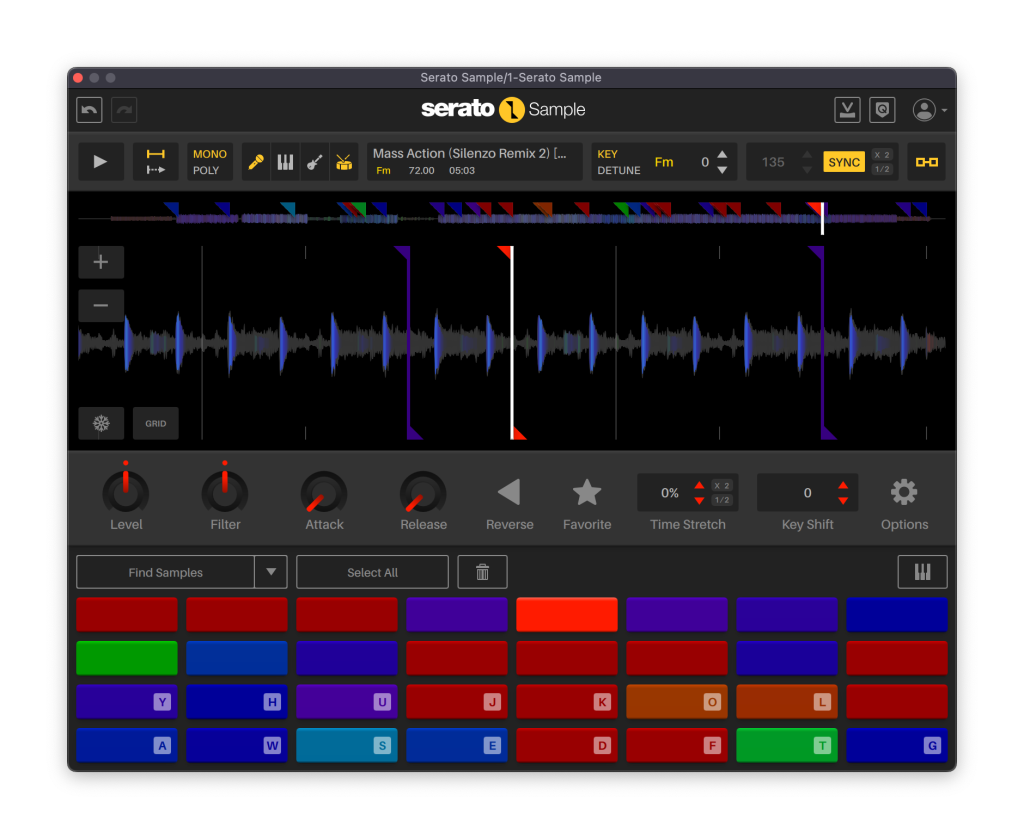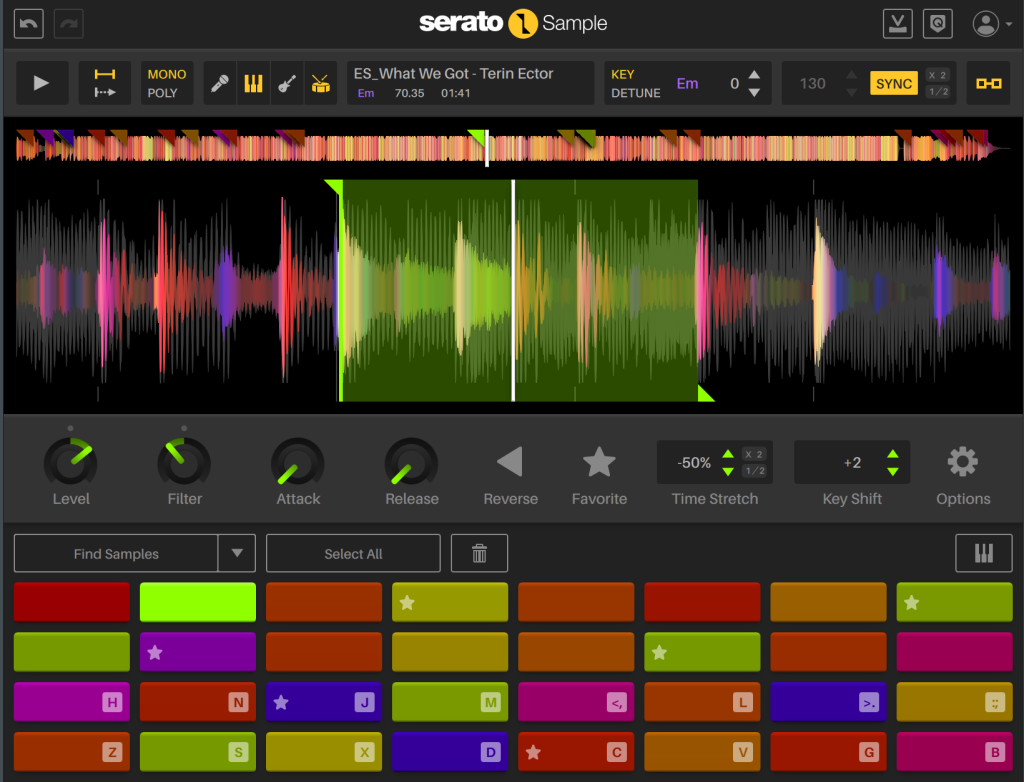It’s sampling and stem separation in one. It’s interface has some DJ deck-style simplicity, but it’s for serious production. It’s Serato Sample 2.0, now with the company’s machine learning-powered stem separation. And it could make Sample worth another look.
Serato’s history
To those stumbling around with other tools, Sample might simply be off your radar. It’s just easy for those not in the know to dismiss this as “some DJ thing.” But apart from Serato’s Pitch ’n Time tech long having been a leader in audio manipulation technology since the late 90s, Sample is possibly less known in production overall partly because lots of folks are more than happy to keep it as a secret weapon. That is, you probably have heard Sample – especially in virtuoso-sampler hip-hop productions – whether you were aware of it or not.
Serato has done a great job refining that UI since its 2017 introduction. New stem features aside, I have to say I found it really a delight to come back to it. (And yes, my first encounter with Serato was shortly after its 1998 debut – on a Pro Tools system, no less!)
There’s something to be said for having a deck-style interface that also syncs to your host. It’s already a remix monster. Now the key with 2.0 is baking in Serato’s machine learning-powered source separation.

Sample meets Stems
That combination is important, because nothing works quite like Serato Sample does. It’s a slick combination of a DJ deck and an MPC-style sampler. You can drop any audio on it, hit find samples, and go – okay, that much you can do elsewhere. But then it’s unique to be able to play the whole track like it’s a deck, hop around to samples, trigger those samples via MIDI or pre-mapped keyboard, switch seamlessly to slice or pitched mode (including glide), and keep everything perfectly synced, re-pitching as you choose. I can describe it, but you can also just see it in that UI. A ton of stuff that requires some fiddling or digging through different screens in other samplers just works here. And the samplers that do that as easily tend then not to easily let you play a whole track. This is the answer to “I am behind on that remix deadline,” among other things.
Sample isn’t for everyone – there are definitely reasons to choose other samples and sampling workflows. But it is pretty easy to get hooked on its way of working, and there’s a baked in audience that already has this as a major way of working, to the point of adding it to their template project.
Now add stem separation to that. It’s as simple as being able to toggle vocals, keys, guitars, and drums (which turn out to map fairly easily to other electronic contexts without those instruments). Analysis is quick, and so seamless as to be almost eerie. All the other functionality continues to work as-is. We got a taste of this in Serato DJ and Serato Studio, but now you can do it without switching tools, and with Sample’s far simpler UI for production.
I’ve been working with Serato Stems since the start of this year and testing the late release version of Serato Sample 2.0 this month. And this works really, really well – without the usual manual labor this would tend to require.
You’ve no doubt seen “AI” hype around various tools intended to divide stereo files automatically into stems. The problem is, most just don’t sound very good. Not so with Serato Stems, as I wrote earlier this year in my review for Resident Advisor. You’ll still hear some minor artifacts as with any process like this, but Serato’s tech for whatever reason is both truer to the source content and better at separating parts the way you hear them, across a range of genres. I go into more depth in that review, if you want to check it out – it’s a related UI and identical algorithms here:
In Review: Serato Stems [Resident Advisor]
But crucially, this sounds way better than EQ/filter and other tricks for trying to get sources out. I had to use an inferior AI product to remake a track of mine late last year, just before trying Serato Stems, and I really wish I’d just had Stems. I do suspect the success of their work here has a lot to do with the dataset they used to train and tweaking things to work in real-world musical contexts. Whatever they did, it works really well – and is well integrated with a clean, understandable interface.
What this means
I have really bad news if you’re not a fan of funny edits and remixes of pop vocals and the like. You’re about to have a whole lot more of them. (I suspect, actually, that some of this upswing is because of the integration of Serato Stems into Serato DJ.)
Instead of figuring out how to bounce out those materials from Serato’s DJ product, any producer will now be able to fire up their DAW of choice – okay, 9 times out of 10 probably Ableton Live – and treat stems like samples. I, for one, am an accelerationist on this – I say bring it on. (To quote The Incredibles – “if everyone is super, no one will be.”) We already have the ability to mix or sample anything. Having functioning Stems that is both this easy and this sonically effective means the only way to separate yourself is how you use this in your music.
Actually releasing anything you sample with stems will be down to having cleared samples – hence some stuff will be limited to DJ sets and bootlegs. (Even in DJ sets, too, it may be useful to go into your DAW beforehand.) But this opens up a huge array of possibilities. You can now take cleared loops and samples and pull out individual components. You could try practicing and learning from a particular part by pulling out a bassline or a drum part or a vocal. And, uh, yeah, the number of times someone asked for a remix only to discover they’d lost the stems and had only the stereo mix… just wow. (How often have I encountered this? I mean, more than once I found I had lost the stems for my own work!)
This release also comes at a significant time in Serato’s history. A lot of music tech acquisitions seem to mark the end of any new launches or innovations. But Serato’s acquisition by AlphaTheta, the parent of Pioneer DJ, sees it with a hot new product with loads of momentum, and loads of potential for use elsewhere. AlphaTheta could certainly screw that up, but I hope in this case we instead see them propel some of these ideas forward.

Stem separation heats up
Serato Sample is not without competition. Moises.ai is one powerful option, which has some particularly compelling vocal features – and a Web interface. On the production/remix side, I’m most interested in RipX DeepAudio, which I’m testing alongside Sample now. RipX’s product is even more focused on this source separation – you can read founder Martin Dawe’s own piece on the history of that tech. It’s got a different workflow than Sample – and Sample’s appeal is about more than just source separation. But I’ll do my best to compare these two soon. So yeah, if you do have something you want remixed and you lost the stems, you can pitch me on it, since I’ll need some material for testing the tools!
Meanwhile, have a look at Serato Sample:
A little more background: Serato points to this stream showing Disclosure working with the earlier Sample.
And Serato has done some good tutorials. Yes, it’s possible to integrate Push and Sample, and more of that is coming – hope to stay in touch with OP and team on this.
I don’t want to short-shrift Studio, either; it’s a really interesting product and if you want some variety, you might want to hop out of your usual DAW. Krithi has a great series of production walkthroughs with it.
Photo and second screenshot courtesy Serato.